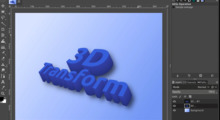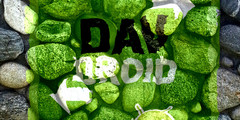Fractal image scaling
This discussion is connected to the gimp-developer-list.gnome.org mailing list which is provided by the GIMP developers and not related to gimpusers.com.
This is a read-only list on gimpusers.com so this discussion thread is read-only, too.
| Fractal image scaling | " | 01 Apr 17:33 |
| Fractal image scaling | Joao S. O. Bueno | 01 Apr 18:44 |
| Fractal image scaling | " | 03 Apr 12:28 |
Fractal image scaling
Good evening!
Liquid scaling is beautiful technology, but differs from fractal scaling
pretty much.
The fractal image scaling is based upon an Fractal compression algorythm and
a functional analisys.
In the fractal compression algorythm we propose that our image is fixed
point of contractive affine transformations. Such system of the affine
transformations is called Iterated function system (IFS). We build the IFS
based upon our image. Then, to get our image we should take any starting
point (any image for example) and apply the IFS many times. As the result we
get our image. That's interesting, that the IFS don't know about image
resolution, and we can take an big resolution image as the starting point.
This way of image scaling is noted by Stephen Welstead in his book "Fractal
and Wavelet Image Compression Techniques" (Chapter 3, 3.6. Resolution
independence).
If it is not good approach, could you offer me another task related to image processing research field?
Regards, Alexander Beloborodov.
Fractal image scaling
2011/4/1 Александр Белобородов :
Good evening!
Liquid scaling is beautiful technology, but differs from fractal scaling pretty much.
The fractal image scaling is based upon an Fractal compression algorythm and a functional analisys.
In the fractal compression algorythm we propose that our image is fixed point of contractive affine transformations. Such system of the affine transformations is called Iterated function system (IFS). We build the IFS based upon our image. Then, to get our image we should take any starting point (any image for example) and apply the IFS many times. As the result we get our image. That's interesting, that the IFS don't know about image resolution, and we can take an big resolution image as the starting point. This way of image scaling is noted by Stephen Welstead in his book "Fractal and Wavelet Image Compression Techniques" (Chapter 3, 3.6. Resolution independence).
If it is not good approach, could you offer me another task related to image processing research field?
Regards, Alexander Beloborodov.]
Hi Alexander -
I myself find this idea very interesting. Certainly, a fractal scaling algorithm of some sort should find its way into GEGL.
Can you elaborate a bit more, or give us a link to a digest article
describing fractal scaling?
In order to consider it as a project, the motivation and advantages of
it should be clear to all developers, so that your project is voted
up.
Your e-mail above is still a bit cryptic on the capabilities of this algorithm regarding what could be available for the final user. You describe the general lines on how does, but we don't know now what it does. For example - can it scale "up" and "down"? Can it compare, visually, to the algorithms already implemented in GIMP? Does it offer at least a theoretical big advantage for the final user? (/me hopes so :-) )
Thanks,
js
->
______________________________________________ Gimp-developer mailing list
Gimp-developer@lists.XCF.Berkeley.EDU https://lists.XCF.Berkeley.EDU/mailman/listinfo/gimp-developer
Fractal image scaling
Hi!
I don't have any description of Fractal scaling algorithm. Technique described at previous message is based only upon my ideas and knowledges from research articles and books (Yuval Fisher - "Fractal Image Compression", Stephen Welstead - "Fractal and Wavelet Image Compression Techniques"). The algorithm used in Genuine Fractals program (by OnOne Software Inc.) is patented and unknown to me.
About comparing and capabilities.
There are a lot of comparisons of different image scaling algorithms in the
web. For example:
http://audio.rightmark.org/lukin/graphics/lhouse_more.htm
It has a big advantage comparing with bilinear and bicubic algorithms.
The algorithm can scale "up" and "down", user simply should specify new
resolution.
Regards, Alexander Beloborodov.











